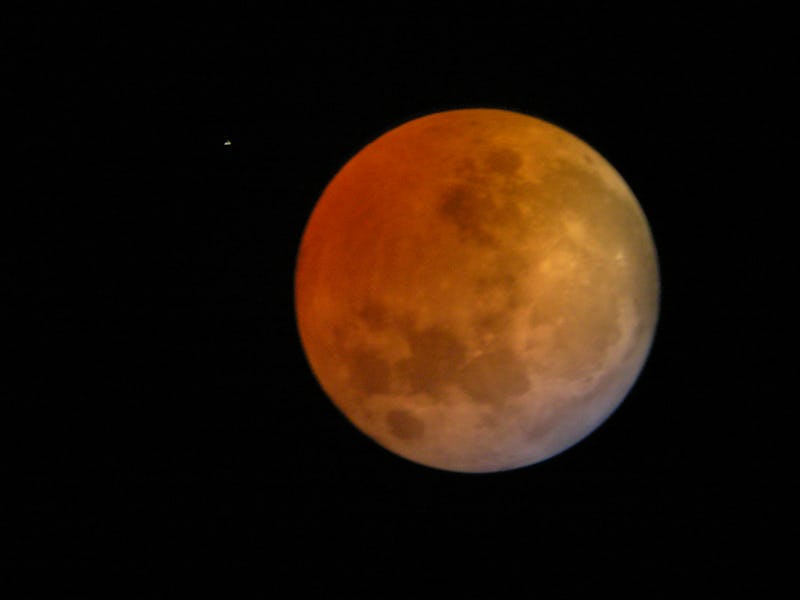Why January's "Blue Moon" Will Turn Blood Red, Explained by an Astronomer

The first month of 2018 will culminate with a strange celestial event known as the Super Blue Blood Moon. While the name already sounds pretty spooktacular, somehow, this particular moon will get even more bizarre — and bloody — an astronomer tells Inverse.
Thankfully, the full moon on January 31 won’t actually involve any bloodshed. But at the very least, it will indeed appear red.
“We don’t have lunar eclipses every month because the moon moves like a carousel around the earth,” Caitlin Ahrens, an astonomer at the University of Arkansas, tells Inverse. “Lunar eclipses happen when the moon is in that sweet spot of being neither up nor down.”
Oooooooooo spooooooky.
This specific alignment of the sun, Earth, and moon means that the moon will pass through Earth’s shadow. As a result, our atmosphere scatters more blue light than red, causing Earthly observers to see a rusty-colored moon. Fun fact: this phenomenon is known as “Rayleigh’s scattering.”
“Being in that sweet spot, the illumination straight on plus our atmosphere bending light makes it red,” Ahrens explains. “Ever seen a gorgeous red sunset? It’s that same bending light effect our Earth atmosphere provides.”
While a murderous-looking moon will look spectacular from Earth, it’d be even cooler to look at our planet during this eclipse. According to Ahrens, an astronaut on the moon would have a total Earth eclipse “with a red halo.” Not too shabby. Not too shabby.
Even though it’s not October, we recommend listening to “The Monster Mash” during the eclipse. Maybe eat some spooky food? Either way, drink a lot of red wine, if that’s your thing.
After all, what better way to kick off 2018 than with a super spooky moon?